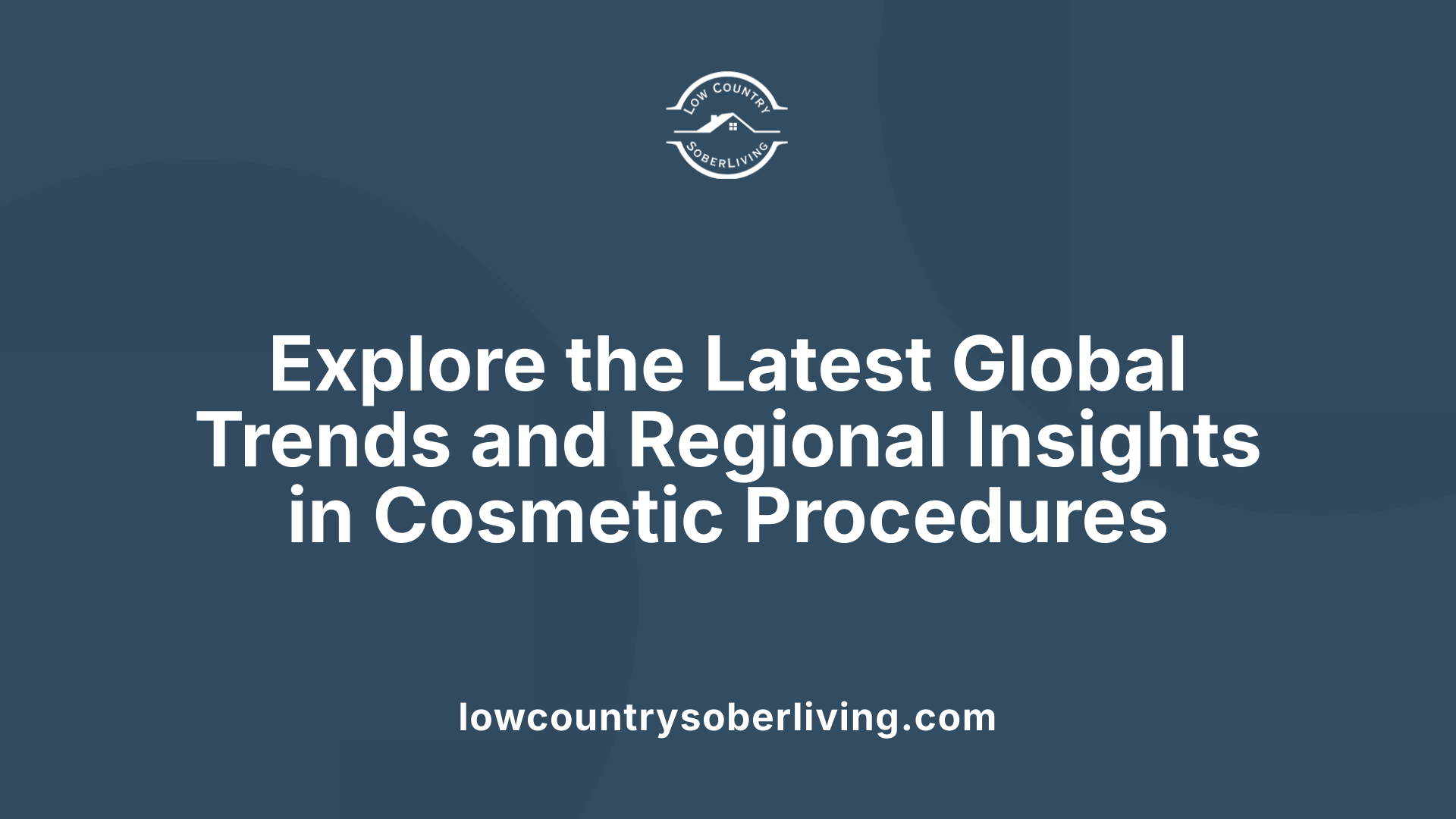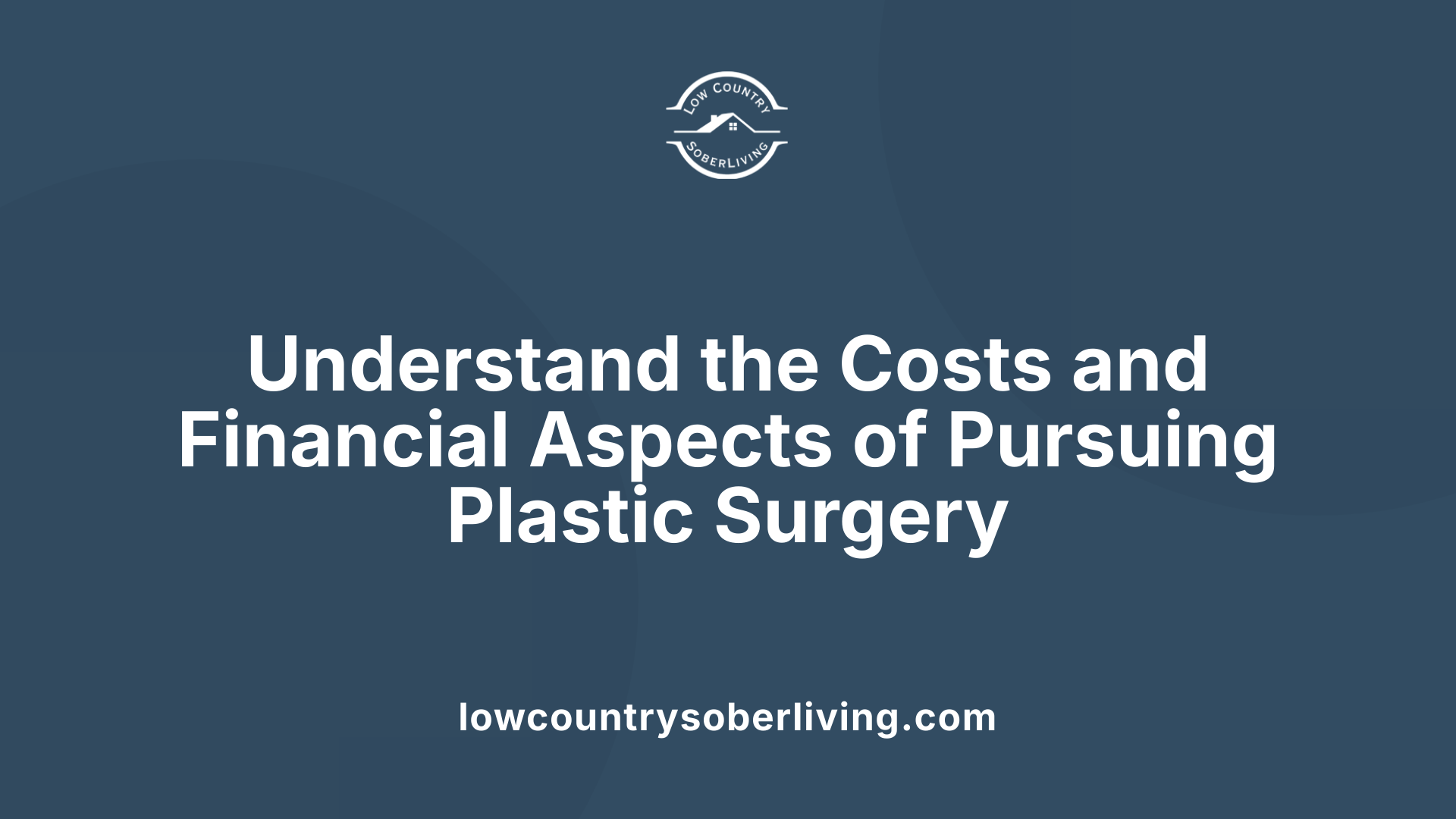Overview of the Plastic Surgery Industry
The field of plastic surgery has experienced remarkable growth over the past two decades, evolving from ancient reconstructive practices to a sophisticated industry encompassing a wide range of aesthetic and reconstructive procedures. With extensive data collected annually by reputable organizations like the American Society of Plastic Surgeons (ASPS), we can analyze longstanding trends, regional disparities, procedure popularity, and the economic factors shaping this dynamic field. This article provides a comprehensive overview of the latest statistics and facts in plastic surgery, offering insights into its historical development, current landscape, and future trajectory.
Historical Evolution of Plastic Surgery

What are an interesting facts about the history of plastic surgery?
Plastic surgery has deep roots that trace back thousands of years. The earliest known practices come from Ancient Egypt, where primitive procedures such as nose repairs and ear lobe surgeries were carried out using rudimentary tools. These ancient techniques laid the groundwork for later developments in the field.
The term 'plastic surgery' derives from the Greek word 'plastikos,' meaning molding or shaping, which reflects the fundamental goal of the field—reshaping and reforming body parts. This etymology highlights the long-standing human desire to restore or improve appearance and function.
A significant milestone in the evolution of plastic surgery occurred during and after World War I. Major Harold Gillies, often called the father of modern plastic surgery, pioneered many facial reconstruction techniques following facial injuries from the war. He established a dedicated center for facial injuries, setting the stage for advances in reconstructive methods.
Throughout the 20th century, innovations expanded significantly. Techniques for breast augmentation, burn treatment, and the development of non-surgical options like dermal fillers and laser treatments emerged. These advancements have made cosmetic procedures more accessible, safer, and less invasive.
Today, plastic surgery encompasses a broad spectrum of reconstructive and aesthetic procedures. Continuous technological innovation—including minimally invasive techniques and improved materials—drives the field forward, offering improved outcomes and increased patient satisfaction.
Current Global and Country-Specific Statistics
 Worldwide, the number of cosmetic procedures has seen a remarkable rise over recent years. In 2022 alone, there were over 14.9 million surgical and 18.8 million non-surgical procedures, reflecting an increase of 11.2% compared to previous years. This growth signifies a sustained global interest in aesthetic treatments, with a total increase of approximately 41.3% in the last four years.
Worldwide, the number of cosmetic procedures has seen a remarkable rise over recent years. In 2022 alone, there were over 14.9 million surgical and 18.8 million non-surgical procedures, reflecting an increase of 11.2% compared to previous years. This growth signifies a sustained global interest in aesthetic treatments, with a total increase of approximately 41.3% in the last four years.
Liposuction stands out as the most common surgical procedure worldwide, with more than 2.3 million cases reported in 2022. Breast augmentation remains highly popular, especially among women, with around 2.2 million procedures globally. Other frequent surgeries include eyelid surgery and abdominoplasty, forming the top five procedures globally.
Regionally, the United States leads the way in total procedure volume, performing over 7.4 million surgeries in 2022, which accounts for roughly 22% of all procedures globally. In terms of surgical volume, Brazil ranks first at the global level, contributing significantly to worldwide figures. Countries like Japan and South Korea also report high procedure rates, with South Korea renowned for its advanced and highly popular cosmetic surgery market.
The distribution between surgical and non-surgical treatments remains skewed towards non-invasive options; botulinum toxin (Botox) continues to dominate non-surgical procedures, with over 9 million treatments worldwide in 2022. Minimally invasive treatments such as fillers and lip augmentation also maintain high popularity.
Per capita data, derived from global surveys, highlights diverse procedure rates across different regions and countries. For example, the United States performs the most procedures overall, whereas other nations show varying degrees of accessibility and demand based on economic and cultural factors. This regional disparity reflects different levels of market maturity and consumer preferences.
The ongoing growth and geographic variation in procedures emphasize the importance of understanding national trends and regional markets to grasp the full scope of the global plastic surgery industry.
Most Common Procedures and Trends

What are the most common plastic surgery procedures?
The landscape of plastic surgery continues to evolve, with certain procedures consistently ranking among the most popular worldwide. Liposuction has emerged as the leading surgical procedure, with over 2.2 million cases in 2023 alone. This popular fat removal technique is followed closely by breast augmentation, abdominoplasty (tummy tuck), eyelid surgery (blepharoplasty), and facelifts, all of which see high numbers annually.
In 2022, liposuction performed worldwide reached over 2.3 million procedures, showcasing a 21.1% increase from previous years. Breast augmentation maintained its position as a favorite among women, with nearly 2.2 million procedures recorded, reflecting a 29% rise since 2021. Additionally, eyelid surgery, often combined with other facial procedures, was among the most frequently performed, emphasizing the growing focus on facial aesthetics.
Rising popularity of minimally invasive treatments like Botox and fillers
Beyond surgical options, minimally invasive procedures like Botox injections and hyaluronic acid fillers continue to gain popularity. Botulinum toxin (Botox) remains the top non-surgical procedure worldwide, with over 8.8 million procedures performed globally in 2023. These treatments are favored for their low downtime, quick results, and versatility in addressing various facial concerns, making them accessible to a broad demographic.
Other popular non-surgical options include lip augmentation, hair removal, and skin rejuvenation treatments. Their increasing demand highlights a shift toward less invasive methods for aesthetic enhancement, with many patients opting for combination treatments that deliver visible results with minimal recovery time.
Shifts in procedure preferences over recent years
Over the past few years, the preferences in plastic surgery have shifted notably. Liposuction has overtaken breast augmentation as the most popular surgical procedure globally, reflecting changing aesthetic priorities. Reconstructive surgery, which addresses trauma and congenital conditions, saw the largest growth in 2024 with a 2% increase.
Facial and head procedures surged by nearly 20%, driven by higher awareness and acceptance of facial rejuvenation techniques. Additionally, body procedures like buttock augmentation experienced substantial increases, with a 56.8% rise in surgeries in 2022.
Age and gender demographics of procedure recipients
Women remain the predominant demographic for cosmetic procedures, accounting for approximately 93-94% in recent years. Most procedure recipients are under age 34, with rhinoplasty being particularly popular among younger patients. However, the industry is gradually becoming more gender-balanced as more men undergo procedures such as rhinoplasty, eyelid surgery, and chin augmentation.
Men's involvement in cosmetic procedures is rising, driven by social acceptance and increased awareness. Overall, the expanding demographic diversity indicates a broadening societal embrace of aesthetic enhancements, regardless of age or gender.
| Procedure Type | 2022 Procedures | Change Since 2021 | Demographic Focus | Cost Approx. (USD) |
|---|---|---|---|---|
| Liposuction | 2.3 million | +21.1% | Adults, mainly women | N/A |
| Breast Augmentation | 2.2 million | +29% | Women, mainly 20-40s | ~$8,200 (US) |
| Eyelid Surgery | 1.9 million | N/A | Women and men, all ages | N/A |
| Botox | 8.8 million | N/A | Adults, mainly 20-50s | N/A |
| Fillers (Hyaluronic acid) | 10 million | N/A | Adults, mainly 20-40s | N/A |
This overview underscores the dynamic and growing nature of aesthetic procedures worldwide, with a clear trend toward less invasive options and expanding demographics.
Industry Practice Patterns and Trends

What are the industry insights and trends in plastic surgery practice patterns?
The landscape of plastic surgery continues to evolve, with a clear shift towards minimally invasive and non-surgical procedures. Procedures such as botulinum toxin injections (Botox) and dermal fillers are increasingly popular due to their low downtime, quick results, and less need for recovery time. In 2024, botulinum toxin remained the most used non-surgical treatment globally, with over 8.8 million procedures performed.
Overall, the total number of aesthetic procedures worldwide has shown consistent growth year over year. For example, in 2023, nearly 35 million procedures were performed, marking a 3.4% increase from the previous year. This trend reflects heightened patient demand for body contouring, facial rejuvenation, and reconstructive surgeries, which collectively influence practice patterns.
Body procedures like liposuction have become the most popular surgical options, surpassing breast augmentation in 2023 with over 2.2 million cases. Breast procedures, including augmentation and lifts, remain high in demand, with the United States leading in number of surgeries.
Reconstructive surgeries are also on the rise. In 2024, this category saw a growth of about 2%, driven largely by more patients needing reconstruction after trauma, illness, or birth defects. This reflects a broader societal emphasis on health and quality of life improvements.
Technological advances and safety considerations play a critical role in shaping practice trends. Surgeons are increasingly adopting evidence-based approaches, modifying implant placement and choosing safer materials based on ongoing research. Furthermore, the use of technology such as laser and energy-based systems for skin tightening and body contouring is expanding.
The growth in body contouring, breast surgeries, and reconstruction procedures highlights a focus on target areas that align with patient demands for natural results and minimal recovery time. These shifts are influencing training programs, with future plastic surgeons emphasizing expertise in minimally invasive techniques and patient-centered care.
In summary, the current industry pattern reflects a balancing act between traditional surgical procedures and the rising popularity of non-invasive treatments, driven by innovations, safety concerns, and the desire for immediate, natural-looking results.
Economic Aspects and Cost Factors

What are the economic aspects and costs associated with plastic surgery?
The financial landscape of plastic surgery is quite diverse, with costs varying significantly based on the type of procedure, geographic location, and healthcare provider. Surgical procedures often range from a few thousand dollars to over $18,000, reflecting the complexity and expertise required. For example, a tummy tuck in the US typically costs around $8,200, while liposuction can exceed $2.2 million worldwide.
Over recent years, the overall expenses for these procedures have increased. Notably, out-of-pocket costs—what patients pay directly—rose by approximately 54% from 2009 to 2017, indicating a growing financial burden for individuals seeking aesthetic enhancements.
Several factors influence the final price of procedures. The experience level of the surgeon, the type of facility (hospital, outpatient surgical center, or office-based practice), and the geographic region all play roles. Procedures performed in hospitals or surgical centers tend to be more expensive than those done in office settings due to higher facility fees.
Cost components typically include surgeon’s fees, facility charges, anesthesia, and post-operative care. Publicly available prices are often higher than the national averages, particularly in high-demand regions like the US and certain urban centers.
When it comes to insurance, coverage is mostly limited to reconstructive or medically necessary surgeries—such as those addressing trauma, illness, or congenital defects. Cosmetic procedures, including breast augmentation and liposuction, are generally paid out of pocket by patients, which can restrict access for some individuals.
This financial aspect impacts not only individual patient choices but also influences industry growth. While demand remains steady, the high costs may limit access for certain populations, shaping the future landscape of aesthetic plastic surgery.
| Cost Elements | Typical Range | Notes |
|---|---|---|
| Surgeon’s Fees | Thousands to over $10,000 | Varies by procedure and region |
| Facility Charges | Several hundred to several thousand dollars | Higher in hospitals |
| Anesthesia | $500 – $2,000 | Depends on procedure complexity |
| Out-of-Pocket Expenses | Significant increase over years | Affected by insurance coverage and location |
Understanding these economic factors can help prospective patients better navigate the financial aspects of pursuing plastic surgery and anticipate expenses based on their specific needs.
Impact of the Pandemic and Future Outlook
How has the prevalence of plastic surgery changed over recent years?
The popularity of plastic surgery has experienced a significant rise over the past two decades. In the late 1990s and early 2000s, annual procedures numbered around 3.2 million, but by 2024, that figure exceeds 35 million globally. This growth spans both surgical and non-surgical options, with minimally invasive treatments like Botox and dermal fillers leading the way due to their quick results and minimal downtime.
Recent data shows a steady upward trend, especially in body contouring, breast procedures, and facial enhancements. For example, liposuction has surpassed breast augmentation as the most performed surgical cosmetic procedure globally in 2023, with over 2.2 million cases. Facial procedures such as eyelid surgery, rhinoplasty, and lip augmentation have also seen increases, particularly in 2021 and 2022.
The broader societal acceptance, technological advances, and expanding accessibility have contributed to this trend. More men and younger patients are now opting for various procedures, reflecting evolving beauty standards. Despite economic uncertainties in 2024, overall demand has remained stable, indicating a resilient interest in aesthetic enhancement.
Furthermore, the growth in reconstructive surgeries—up by 2% in 2024—demonstrates the expanding scope of plastic surgery beyond purely cosmetic purposes, addressing trauma, illness, and congenital conditions. This sustained upward trajectory highlights the increasing importance placed on personal appearance and quality of life worldwide.
| Year | Total Procedures (Millions) | Surgical Procedures | Non-surgical Procedures | Notable Trends | |--------|------------------------------|------------------------|--------------------------|--------------| | 2022 | 30 | 12.8 | 17.6 | Surge in body and facial procedures | | 2023 | Nearly 35 | 15.8 | 19.1 | Liposuction overtook breast augmentation | | 2024 | Data not specified exact | Increasing reconstructive surgeries | Stability in overall demand |
Summary and Future Directions
The plastic surgery industry continues to expand rapidly, with increasing procedural diversity and regional growth disparities. Advances in minimally invasive techniques and societal acceptance are key drivers of this growth, alongside technological innovation. As demand remains steady despite economic fluctuations, the industry is poised to evolve further, emphasizing safety, evidence-based practices, and expanding access to cosmetic and reconstructive procedures worldwide.
References
- Plastic Surgery Statistics - American Society of Plastic Surgeons
- Global Survey 2023: Full Report and Press Releases - ISAPS
- Plastic Surgery Statistics 2024 - American Society of Plastic Surgeons
- Cosmetic surgery - Statistics & Facts | Statista
- Aesthetic Society Procedural Statistics
- Cosmetic Surgery Boom | The British Association of Aesthetic Plastic ...
- 2021 Statistics & Trends Released - Demand for Facial Plastic ...
- Plastic Surgery Statistics and Facts (2025) - Market.us Media
- Global Survey 2022: Full Report and Press Releases - ISAPS
- The History of Plastic Surgery - Ramsay Health Care

